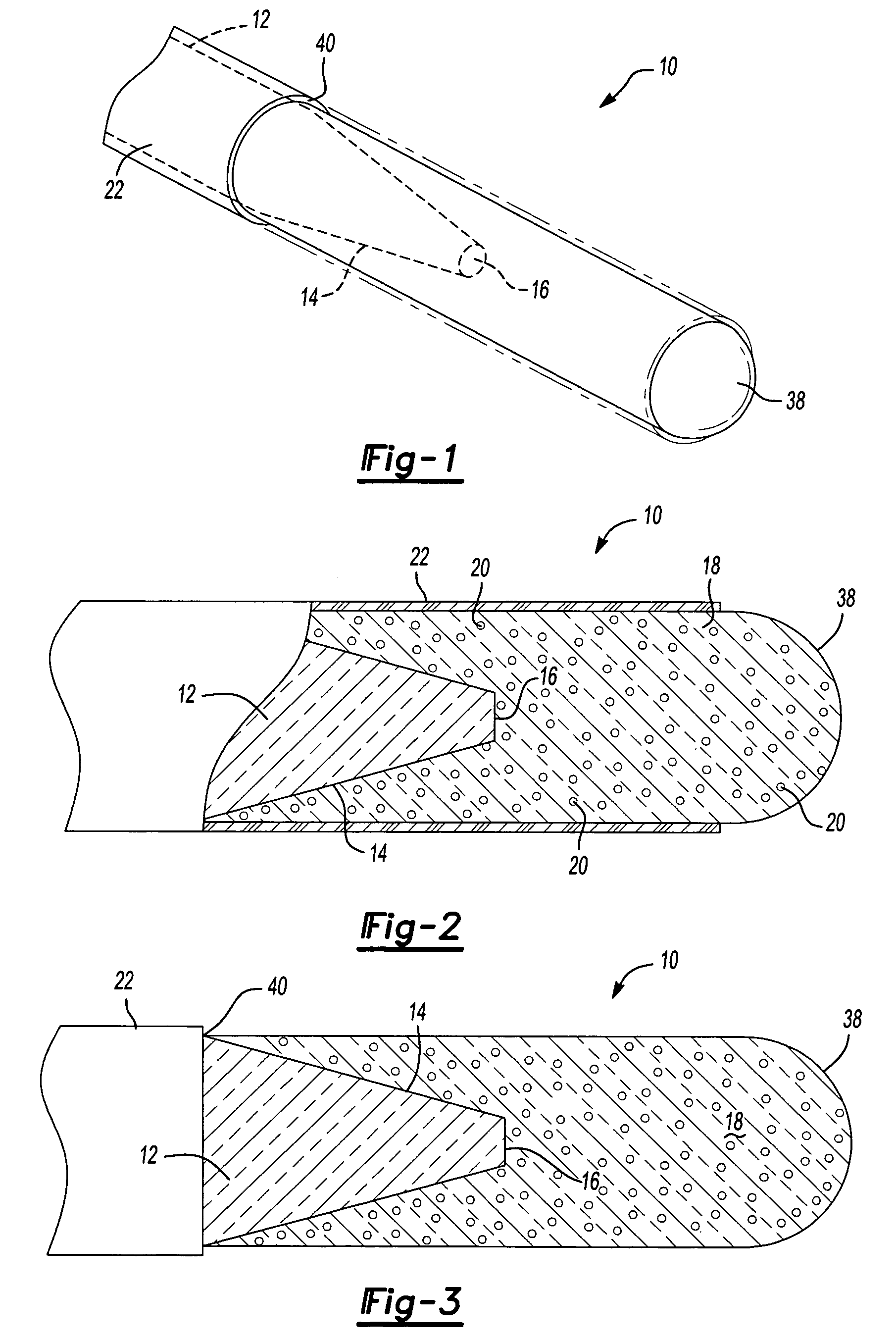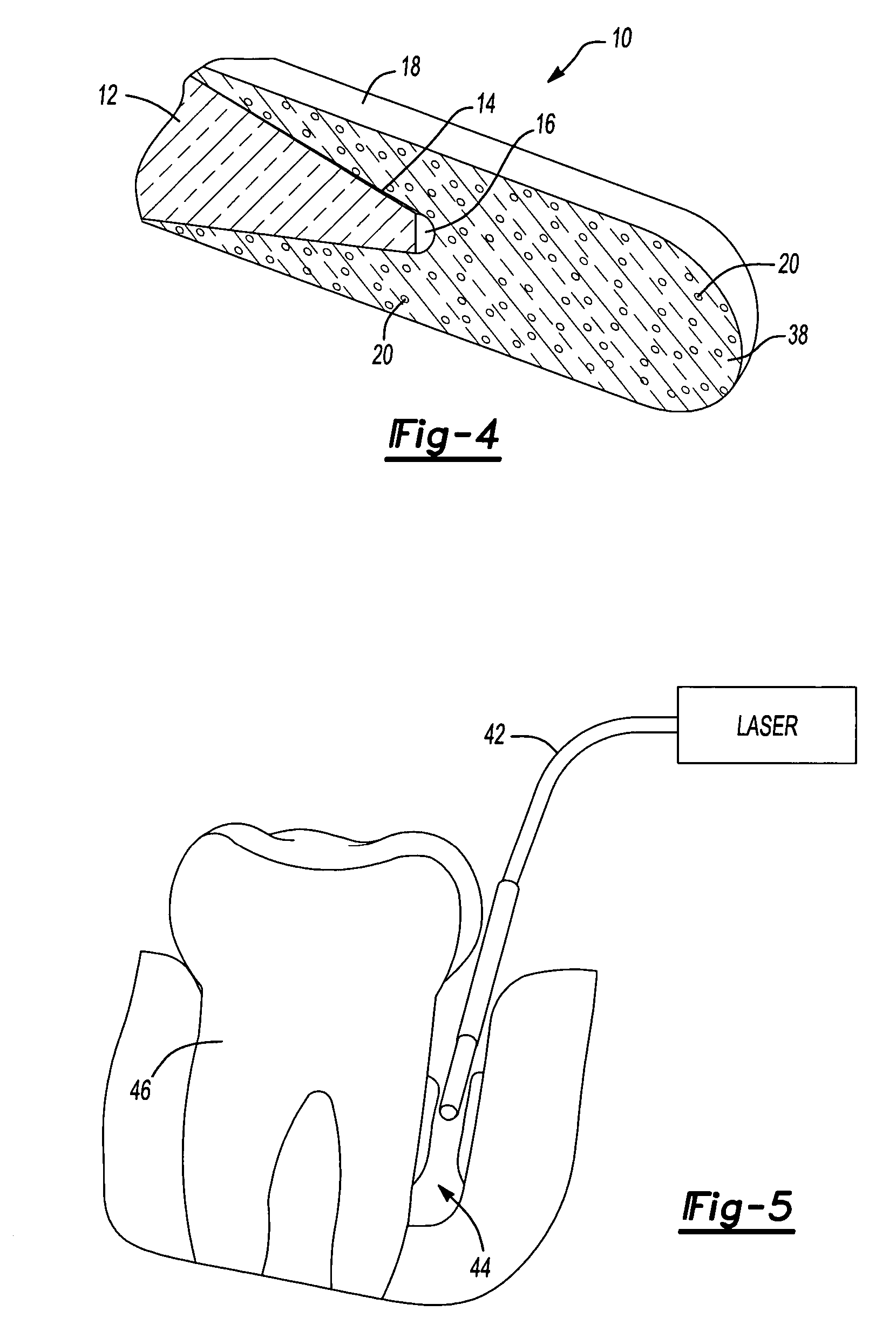Fiber optic probe tip
a fiber optic and probe tip technology, applied in the field of medical devices, can solve the problems of cell necrosis, unsuitable enlarged probe tip, and tip type susceptible to fiber breakage, and achieve the effect of less invasiv
- Summary
- Abstract
- Description
- Claims
- Application Information
AI Technical Summary
Benefits of technology
Problems solved by technology
Method used
Image
Examples
Embodiment Construction
[0021]Referring now to FIG. 1, shown generally at 10 is a fiber optic probe or probe tip constructed in accordance with a preferred embodiment of the invention. The probe tip is constructed from an optical fiber 12 (e.g., a native, fused silica fiber optic cable). The end of the optical fiber 12 is tapered in the manner illustrated in the drawings. While the drawings illustrate a symmetrical, conical taper, with a truncated tip or face 16, it is to be appreciated that the taper may not follow a precise geometric configuration. The shape of the tapered end 14 may vary according to manufacturing techniques. For example, the tapered end 14 may be shaped as a full or partial wedge or may form any other shape that progressively reduces the cross-sectional area of the fiber 12 at the end.
[0022]The very end of the probe consists of a fill or terminal material 18, which is typically transparent or translucent, although not necessarily required for the entirety of the material. As shown in F...
PUM
| Property | Measurement | Unit |
|---|---|---|
| diameter | aaaaa | aaaaa |
| thickness | aaaaa | aaaaa |
| outer diameter | aaaaa | aaaaa |
Abstract
Description
Claims
Application Information
 Login to View More
Login to View More - R&D
- Intellectual Property
- Life Sciences
- Materials
- Tech Scout
- Unparalleled Data Quality
- Higher Quality Content
- 60% Fewer Hallucinations
Browse by: Latest US Patents, China's latest patents, Technical Efficacy Thesaurus, Application Domain, Technology Topic, Popular Technical Reports.
© 2025 PatSnap. All rights reserved.Legal|Privacy policy|Modern Slavery Act Transparency Statement|Sitemap|About US| Contact US: help@patsnap.com



